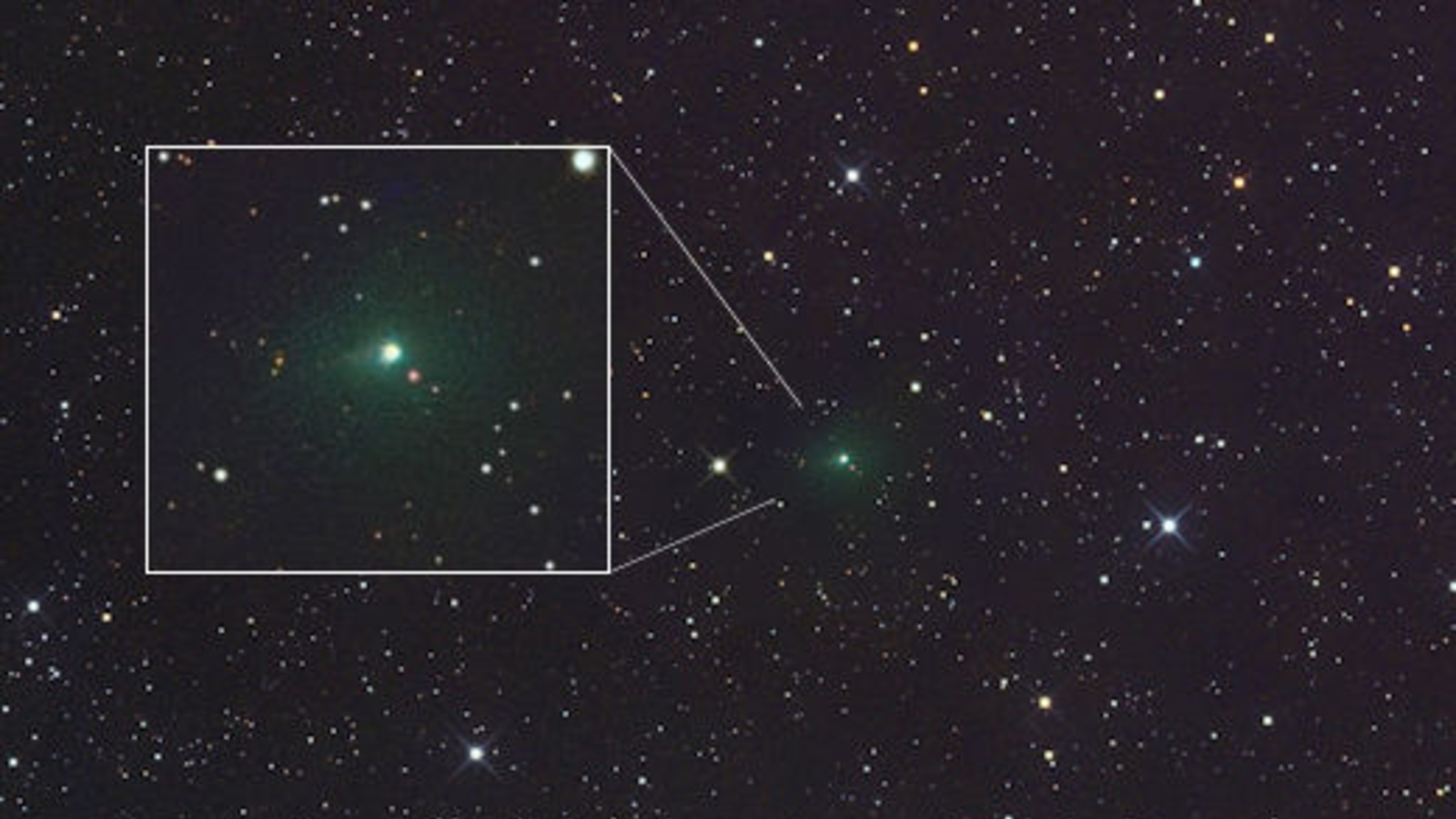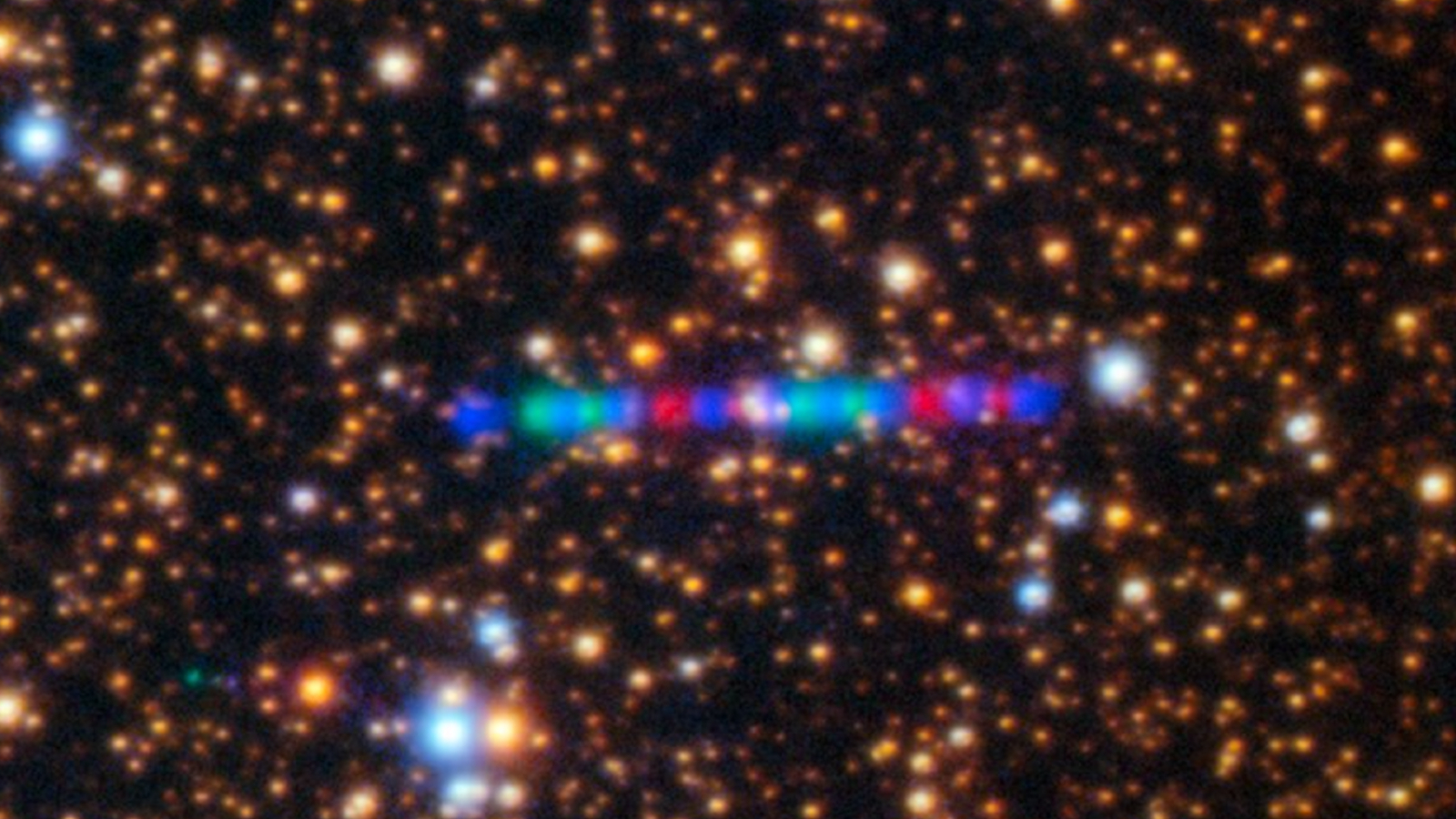Interstellar comet 3I/ATLAS may be developing a blueish hue after undergoing a rapid and unexpected brightening event while hidden behind the sun, new observations reveal. This is the third time that experts have noted a potential change to the comet’s color — but, so far, none of them have stuck.
3I/ATLAS, the third-known interstellar object to visit our solar system, was spotted shooting toward the sun at more than 130,000 mph (210,000 km/h) in early July. The comet is potentially the oldest of its kind ever seen and was likely ejected from its home star system, somewhere in the Milky Way’s frontier, more than 7 billion years ago. Since then, it has sailed through interstellar space, before making its current rendezvous with our solar system.
The comet reached its closest point to the sun, known as perihelion, on Oct. 29, when it was mostly hidden from us, reaching a minimum distance of 130 million miles (210 million kilometers) from our home star — around 1.4 times farther from the sun than Earth. The day before, a pair of researchers analyzing data from spacecraft that could still see 3I/ATLAS revealed that the comet had brightened by several orders of magnitude after disappearing from view, which can’t be fully explained by its proximity to the sun.
In the same paper, the researchers also wrote that the comet appears to be “distinctly bluer than the sun,” which came as a surprise given that this color had not been seen in the comet until now. This color change is likely the result of a specific gas, such as carbon monoxide or ammonia, leaking from the comet, they argued. (This study has not yet been peer-reviewed, and no other observations have thus far confirmed the blue coloration.)

The researchers noted that the blue coloration is in sharp contrast to the initial red hue given off by the comet during early observations in July, which was likely the result of an abundance of dust coming off its surface. Then, in September, the comet briefly appeared to be turning green, likely due to the presence of dicarbon or cyanide within its coma.
But these changes of coloration were only temporary, and it’s currently unclear why that is. Only time and continued observations will tell if the comet’s new coloring will stick.
Over the next few weeks, the comet will become increasingly visible to stargazers in the Northern Hemisphere as it moves northward in the night sky. However, it will not be visible to the naked eye, meaning you will need a decent telescope or a pair of stargazing binoculars to see it for yourself.

3I/ATLAS will reach its closest point to our planet on Dec. 19, coming within a minimum distance of 168 million miles (270 million km) — around 1.8 times the Earth-sun distance. Between now and then, researchers will get a much better look at the comet, enabling them to study it in even greater detail. Two ESA spacecraft may also fly through the comet’s long tail before it begins its journey back out of the solar system.
The extrasolar entity has displayed several unusual traits since it was first discovered, including an abundance of carbon dioxide, high levels of water leakage and a puzzling anti-tail. Researchers also believe that its icy shell may have been transformed by billions of years of cosmic ray bombardment, potentially making it harder to track the material of its home star system.
As a result of these anomalous characteristics, some researchers have controversially proposed that 3I/ATLAS may be a piece of alien technology in disguise. However, there is no solid evidence to support this theory, and most experts maintain that the object is behaving exactly as a comet should.
